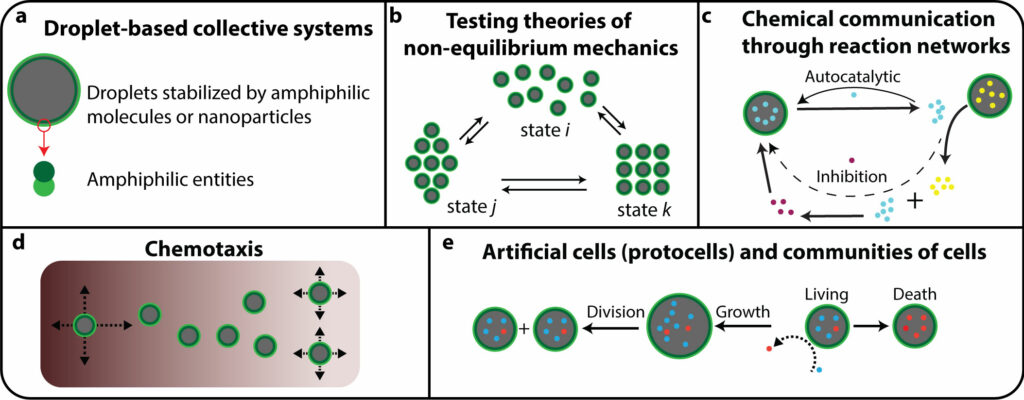Droplet collectives as a model of programmable active matter

Droplet-based collective systems. (a) Droplets are stabilized by amphiphilic entities, such as block copolymer or nanoparticle dimers. (b) Using different formations to test theories of non-equilibrium mechanics. (c) Using the triggered release of chemicals as a way for communications between droplets. (d) Demonstrating collective behaviours such as chemotaxis. (e) Using chemical-based fuels to demonstrate concepts relevant to origin-of-life research such as division and death.
Selected relevant publications:
- Wang, W.†; Timonen J.†; Carlson, A.; Drotlef, D; Zhang, T.Y.C.; Grinthal, A.; Kolle, S.; Wong, T.-S.; Hatton, B.; Carlson, A.; Kang, S. H.; Kennedy, S.; Chi, J.; Blough, R. T.; Sitti, M.; Mahadevan, L.; Aizenberg, J., Multifunctional ferrofluid-infused surfaces with reconfigurable multiscale topography. Nature 559, 77-82 (2018). Publisher’s version, accepted version, press release.
- Wang, W., Giltinan, J., Zakharchenko, S. & Sitti, M. Dynamic and programmable self-assembly of micro-rafts at the air-water interface. Sci. Adv. 3, e1602522 (2017). Publisher’s version, PDF, video
- Koens, L.; Wang, W.; Sitti, M.; Lauga, E., The near and far of two magnetic capillary disks, Soft Matter 15, 1497–1507 (2019). Publisher’s version, inside back cover